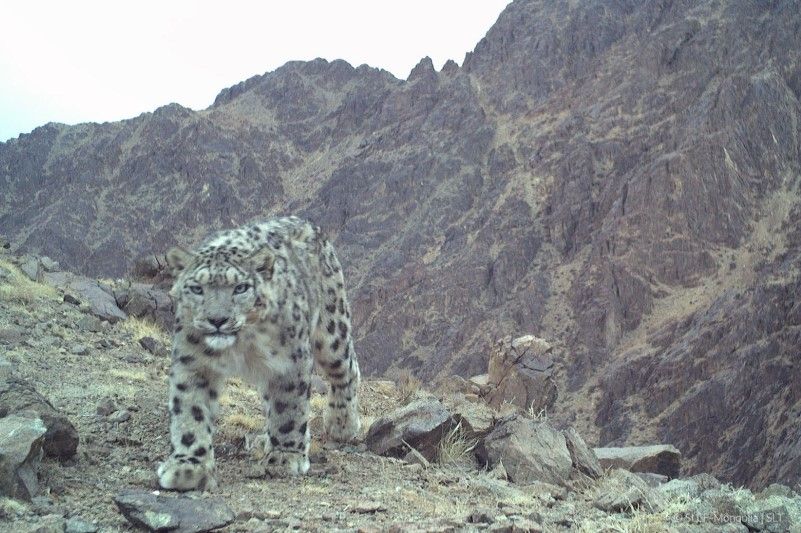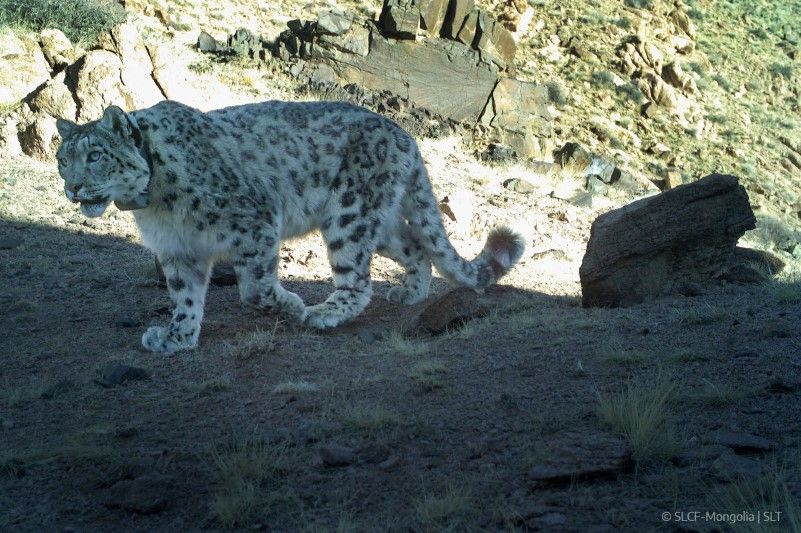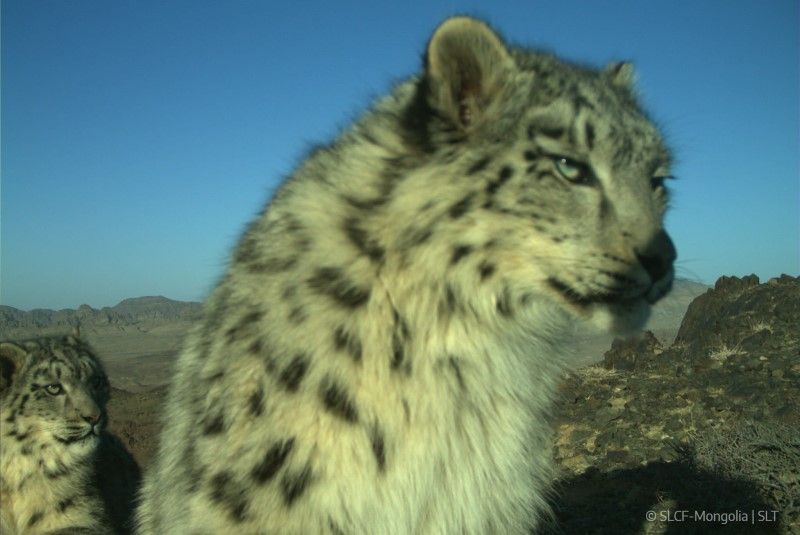Snow Leopard Trust scientists are back in the field collaring snow leopards in Mongolia as part of their long-term ecological study of this endangered species and its habitat. The team of international and Mongolian conservationists have safely collared and studied more individual snow leopards than anyone else on the planet. This knowledge is crucial to understanding snow leopard ecology and helps inform global snow leopard conservation strategies. Below is an excerpt from an exciting report they recently received from Orjan Johannson, Snow Leopard Trust Senior Scientist.
Meet Sym and The Dude
“This snow leopard (M21) is the 21st male in our long-term study. We think he is six to seven years old. We first detected him in Tost in our camera trap survey in 2019 and named him Sym. From the cameras, it appears his territory is in the central parts of Tost Mountains. For some location context, the area where we do our collaring is currently held by a big male (M15), who was first collared in 2018. At that time, M15 weighed 54 kg, which is the largest wild snow leopard measured to date. Body-wise, he looked more like a male puma than a snow leopard. We nicknamed him The Dude. He is likely 9-10 years old now, which seems to be about the age when males get ousted from their territories or killed by younger males.
Why are we talking about The Dude in an announcement about a different male? Because M21 was collared in The Dude’s territory. And while the Dude is getting old for a snow leopard, he is still a huge male and intruding in his territory appears costly. The younger M21 weighed in at a respectable 47 kg. However, since he was photographed by our camera traps last October, he has lost his left eye, has an injury on his upper lip and scars all over his face. The wounds are not fresh so we suspect he got these battle scars in confrontations with other males during mating season this spring. (It’s not easy meeting a partner for us humans either, but it’s a whole ‘nother level of difficult for snow leopards.)”
Another success this collaring season
A second report from Orjan announced another success this collaring season.
“We collared another big male snow leopard tonight. His ID will be M22. He is about four years old and weighed in at 49 kg. His large size (and that of the other males we’ve recently collared) makes us wonder if there may possibly be some Dude Juniors roaming around that have inherited his size. In time, our DNA samples will help answer that question.
Right now, we don’t know much about M22. We will compare our photos of his coat pattern to the camera trap photo surveys to see if we have detected him earlier. He didn’t have any scars on his face, so I doubt he has managed to establish a territory yet. We’ll see what we learn from his collar data over the next 20 months.
While we were waiting for M22 to recover, I turned off my headlamp and sat next to him. The moon and stars were bright enough to illuminate the surrounding jagged mountain contours, the craggy cliffs closest to us and the big cat. Just sitting there in the soundless night got me thinking. Our director Charu always says, “With snow leopards, it is usually love at first sight. And if it isn’t, they definitely grow on you.” There is undoubtedly something special about this species. Sitting next to one on a mountain night is hard to describe. Yes, they’re beautiful and all cats are fascinating. But to me, it’s something else . . .
Their near-mythical nature sometimes makes me think we should just leave them alone. But in this world of ever-increasing resource demands, the best way to safeguard their future is to develop robust conservation and management plans. And these must be based on rigorous science. So, we will persevere in our efforts to learn more about this magnificent cat and do our utmost to ensure they roam these mountains for generations to come.”
Acknowledgments: This long-term ecological study is in collaboration with Snow Leopard Conservation Foundation in Mongolia and Snow Leopard Trust with special thanks to the Ministry of Nature, Environment and Tourism, Government of Mongolia, and the Mongolian Academy of Sciences for their support.
Learn more about our conservation partner and funding for Snow Leopard Conservation Foundation
Header image credit SCLF-Mongolia | SLT



